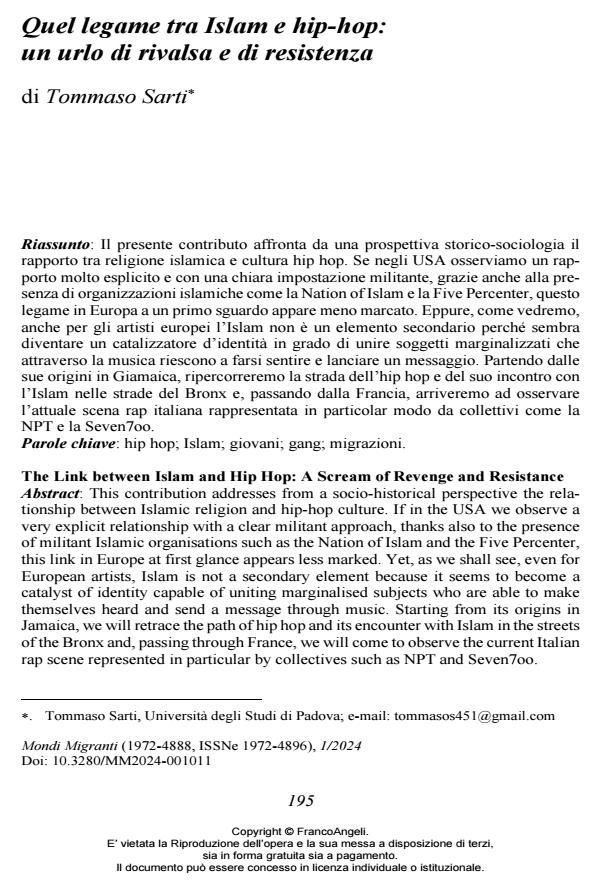The Link between Islam and Hip Hop: A Scream of Revenge and Resistance
Journal title MONDI MIGRANTI
Author/s Tommaso Sarti
Publishing Year 2024 Issue 2024/1
Language Italian Pages 16 P. 195-210 File size 231 KB
DOI 10.3280/MM2024-001011
DOI is like a bar code for intellectual property: to have more infomation
click here
Below, you can see the article first page
If you want to buy this article in PDF format, you can do it, following the instructions to buy download credits

FrancoAngeli is member of Publishers International Linking Association, Inc (PILA), a not-for-profit association which run the CrossRef service enabling links to and from online scholarly content.
This contribution addresses from a socio-historical perspective the relationship be-tween Islamic religion and hip-hop culture. If in the USA we observe a very explicit relationship with a clear militant approach, thanks also to the presence of militant Islamic organisations such as the Nation of Islam and the Five Percenter, this link in Europe at first glance appears less marked. Yet, as we shall see, even for Euro-pean artists, Islam is not a secondary element because it seems to become a cata-lyst of identity capable of uniting marginalised subjects who are able to make themselves heard and send a message through music. Starting from its origins in Jamaica, we will retrace the path of hip hop and its encounter with Islam in the streets of the Bronx and, passing through France, we will come to observe the cur-rent Italian rap scene represented in particular by collectives such as NPT and Sev-en7oo.
Keywords: hip hop; Islam; young; gang; migration
Tommaso Sarti, Quel legame tra Islam e hip-hop: un urlo di rivalsa e di resistenza in "MONDI MIGRANTI" 1/2024, pp 195-210, DOI: 10.3280/MM2024-001011